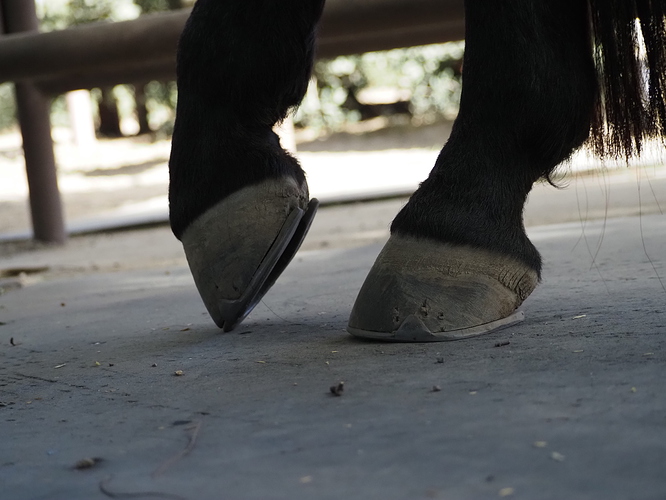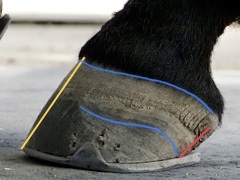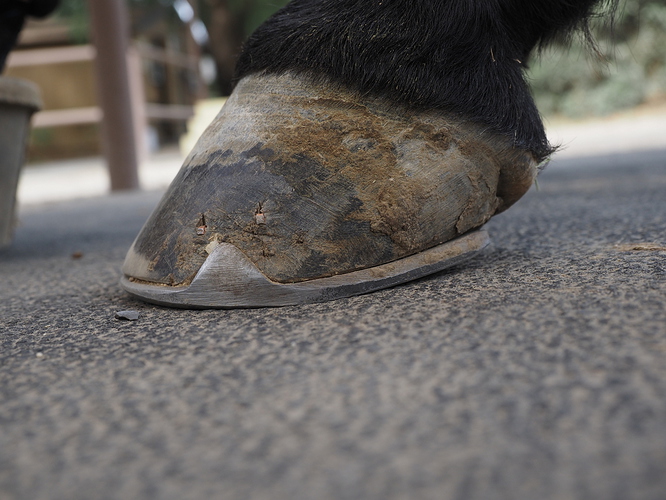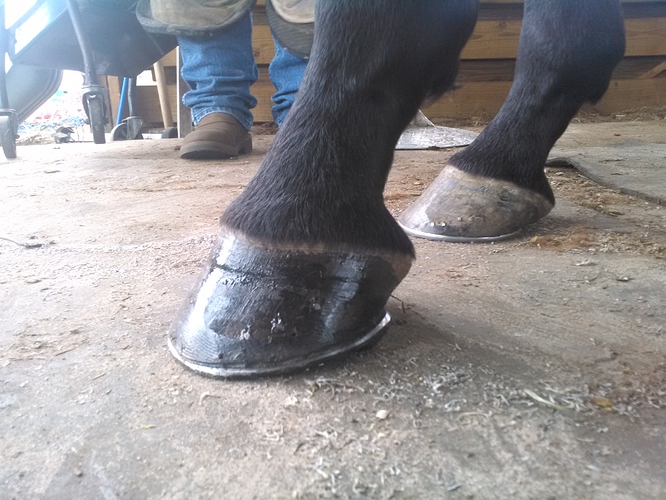Wow, thanks, all good information to check out tomorrow and get pics.
@EventerAJ I appreciate the “hairline hitting forearm” guidance, and the fact that the shoes were only temporary – part of me thought they can’t be in these belly rockers permanently, can they?
@kashmere He never looked bull-nosed to me before, but now I am searching for a prior photo of his feet to compare because if I stare hard enough, I can make him look bull-nosed, lol.
@BoyleHeightsKid, collateral grooves seem good to me, gonna measure tomorrow.
@candyappy, ah… now this is my worry, too. He was going fine with former farrier, but his fronts were in wedge pads. Pads that we put on because horse was off and xrays showed a bone cyst. Later MRI said “no bone cyst, just an xray artifact” but the pads never came off after a year, despite horse being sound.
Farrier kept saying my horse didn’t grow heel, but he had plenty of heel to me, and when I asked this forum awhile back with photos (Oh! there might be some good photos to look at, if I can find them…) the consensus was that he had enough heel.
The new farrier’s first question to me was “why is he in pads?” Which was music to my ears. But then it went a bit further to be critical of former farriery work, which was a slight bit of red flag. Especially about toes being too short. My guy is a ranch quarter horse and I am at a dressage barn where all the horses appear to have longer toes in comparison.
Former farrier did not notice negative plantar angle, but xrays showed it. I never took another set of films to know if it was corrected. But new farrier’s observation of a negative plantar angle contributing to his way of moving “tight behind” was a green flag.
There is enough interesting comments to make me continue on this path with watchful eyes. This is the first farrier that has wanted to watch my horse at W-T-C, which I liked. I think I will get xrays all the same.
Photos tomorrow! Appreciate everyone’s help!







